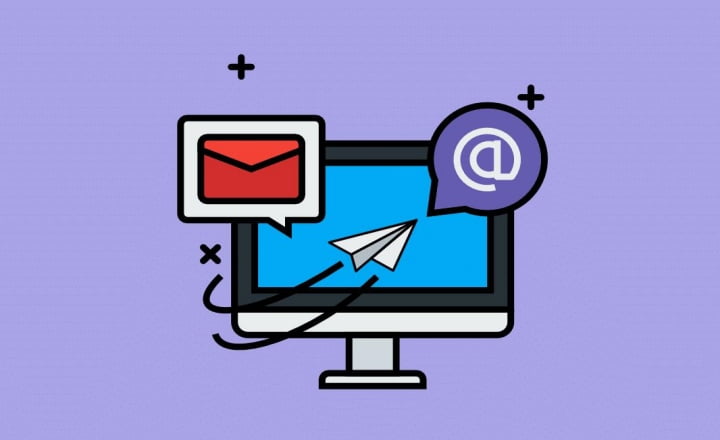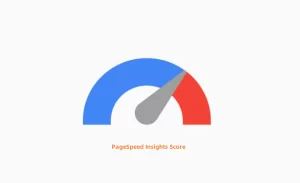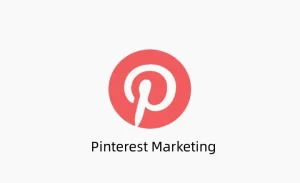Email marketing continues to be a powerful tool for B2B companies to reach their target audience, nurture leads, and drive conversions.
However, with the increasing competition and evolving consumer expectations, B2B marketers must stay up-to-date with the best practices in email marketing.
In this blog post, Dolma will explore the most effective strategies and techniques to optimize your B2B email marketing campaigns for success.

Table of Contents
- Creating Engaging Content
- Personalization: The Key to Success
- Identifying the Right Audience
- Crafting Irresistible Subject Lines
- Driving Action with Compelling CTAs
- Ensuring Email Deliverability
- Segmentation: Tailoring Messages
- Creating Relevant and Concise Content
- Timing: The Art of Perfect Timing
- Omnichannel Coordination and Automation
- Conclusion
Let’s dive into each section and uncover the best practices that will empower your B2B email marketing campaigns.
1. Creating Engaging Content
The Importance of Relevant and Informative Content
Research has shown that providing relevant content before asking for a sale yields better results.
Understanding the interests and pain points of the target audience is crucial for crafting engaging content. By aligning the content with the recipient’s interests, marketers can establish themselves as trusted industry experts and build stronger relationships.
The Impact of Call-to-Action (CTA) Placement
A well-placed and informative CTA is one of the most important B2B email marketing best practices. Rather than using generic CTAs like “try me now” or “buy now,” it is more effective to provide a CTA with more information.
According to a study conducted by Admitter, a Dutch email marketing agency, CTAs with more information convert better in 90% of cases. Marketers can increase conversion rates by offering relevant content and guiding recipients through the buying process.
Tailoring Content to Each Stage of the Buying Cycle
To effectively engage B2B audiences, it is essential to understand the different stages of the buying cycle and provide appropriate content at each stage.
A useful table created by Brainrider outlines what content to share at each stage of the buying cycle.
By delivering the right content at the right time, marketers can nurture leads, address their specific needs, and move them closer to making a purchase decision.
Buying StageContent Type
- Awareness Blogs, infographics, industry reports
- Consideration Webinars, case studies, product comparisons
- Decision Demo videos, customer testimonials, pricing guides
2. Personalization: The Key to Success
The Power of Personalized Subject Lines
Personalization is one of the most critical B2B email marketing best practices. Studies have shown that personalized subject lines can boost email open rates by 29.3% across industries.
B2B marketers now have access to a wide range of tools and customer data to personalize messages based on the recipient’s position in the buying decision.
By leveraging such data, marketers can create subject lines that capture the recipient’s attention and increase open rates.
Going Beyond “Hi [First Name]”: Leveraging Customer Data
To personalize email messages effectively, marketers need to gather relevant information about their target audience. Existing clients can provide valuable data that helps identify the common characteristics of ideal customers.
It is possible to create highly personalized and targeted campaigns by understanding these characteristics, known as buyer personas. Buyer personas include details such as job titles, industry, demographics, psychographics, and geographic information.
By utilizing this data, marketers can deliver more relevant content and improve overall brand perception.
Creating Buyer Personas for Effective Segmentation
Buyer personas allow for better B2B email marketing campaigns by enabling highly personalized and targeted messaging. Marketers can use buyer personas to create contextual subject lines that set the right expectations for the email content.
Marketers can drive engagement by asking relevant questions, segmenting their lists based on time zones, and categorizing subscribers into different personas.
Triggered emails based on lead behavior further enhance the personalization and effectiveness of B2B email campaigns.
3. Identifying the Right Audience

Moving Beyond Job Titles: The Challenge of Targeting Decision-Makers
In B2B marketing, job titles alone are no longer sufficient for identifying the right audience.
With the ambiguity surrounding titles like “CEO,” it becomes crucial to utilize additional criteria for accurate targeting. Company size is often a better indicator of the audience’s relevance.
In addition, decisions are rarely made by a single individual, so engaging multiple people within a decision-making unit (DMU) is essential.
Leveraging Company Size for Audience Segmentation
Segmentation plays a vital role in B2B email marketing. By categorizing the email list based on company size, marketers can tailor their messages to suit the specific needs and challenges faced by different organizations.
A larger company may have different requirements compared to a startup or a small business. Segmenting the list based on company size allows for more personalized and targeted communication.
Engaging the Decision-Making Unit (DMU) of an Organization
The DMU within an organization consists of individuals with varying responsibilities and perspectives. To engage effectively with each member of the DMU, marketers must practice list segmentation.
By understanding the specific roles and challenges faced by each individual, marketers can craft tailored messages that resonate with their unique needs. Engaging the entire DMU increases the chances of driving conversions and fostering long-term relationships with the organization.
4. Crafting Irresistible Subject Lines
The Impact of Subject Lines on Email Open Rates
Subject lines play a critical role in the success of B2B email marketing campaigns. Research indicates that 64% of people open emails based on the subject line alone.
To maximize open rates, marketers must create subject lines that pique the recipient’s interest and curiosity.
While the effectiveness of subject lines may vary based on the audience and industry, there are some general principles to follow for crafting compelling subject lines.
Principles for Effective Subject Lines
- Avoid spam words and symbols that may trigger spam filters.
- Aim for subject lines between 17-24 characters for optimal impact.
- Keep subject lines short, ideally 3-5 words, to convey the message concisely.
- Experiment with using emojis in subject lines to add visual appeal and catch the reader’s attention.
- A/B testing subject lines provides valuable data for making informed decisions and improving future campaigns.
The Art of A/B Testing for Continuous Improvement
A/B testing is a powerful technique for optimizing B2B email marketing campaigns. By testing different subject lines, marketers can gather data on what works best for their audience and refine their strategies accordingly.
Tools like email subject line testers can provide insights and recommendations for creating subject lines that maximize open rates. Continuous testing and improvement are essential to stay ahead in the competitive landscape of B2B email marketing.
5. Driving Action with Compelling CTAs

The Role of CTAs in Nurturing and Generating Leads
CTAs are crucial for driving action and converting leads in B2B email marketing. They serve as direct invitations for recipients to take the next step, whether it’s visiting a landing page, downloading a resource, or contacting the company.
B2B email campaigns should go beyond simply reminding customers of the brand’s existence and provide clear directions for engagement.
By including compelling CTAs, marketers can encourage recipients to continue the conversation and move closer to making a purchase decision.
Designing Clear and Persuasive CTAs
Creating an amazing call to action requires careful consideration of three key elements: the action, the words used, and the design.
Additionally, providing clear directions regarding what recipients should do, where they will go, and why they should follow through enhances the effectiveness of CTAs.
Best Practices for Maximizing Clickthrough Rates
To maximize clickthrough rates, B2B marketers should:
- Ensure that CTAs are easily visible and accessible.
- Use compelling copy that clearly communicates the value proposition.
- Utilize images with linkable logos and pictures to enhance clickability.
- Enable personalization by tailoring CTAs to the recipient’s interests and preferences.
- Test different CTAs and analyze the data to optimize clickthrough rates.
By following these best practices, marketers can drive higher engagement, increase clickthrough rates, and achieve the desired conversion outcomes.
6. Ensuring Email Deliverability
The Consequences of Invalid Emails and Bounces
Email deliverability is a critical aspect of B2B email marketing. If emails do not reach the intended recipients, all the effort put into creating engaging content and compelling subject lines goes to waste.
Invalid emails and email bounces can negatively impact the overall effectiveness of email campaigns and damage the sender’s reputation.
To ensure successful email deliverability, marketers must take proactive measures to validate emails and minimize the chances of bounces.
The Importance of Email Validation
By utilizing a comprehensive email marketing and automation platform, marketers can validate their emails, maximize deliverability, and improve overall campaign effectiveness.
Automation tools further enhance the efficiency of email validation processes, ensuring that content reaches the intended audience and drives desired outcomes.
Utilizing Tools and Techniques for Email Verification
Email validation is an essential part of B2B email marketing best practices. Tools like EngageBay provide A/B testing, spam protection, and advanced analytics to validate emails.
By leveraging these tools, marketers can verify the authenticity of email addresses, reduce bounce rates, and improve overall campaign performance.
Validating emails is a smart and efficient way to ensure that content reaches the intended audience and achieves the desired results.
7. Segmentation: Tailoring Messages
The Power of Audience Segmentation
Segmentation is a crucial element of successful B2B email marketing campaigns. By categorizing the email list based on various factors such as demographics, past purchases, and email receptivity, marketers can tailor their messages to suit the specific needs and preferences of different segments.
Segmentation allows for highly personalized and targeted communication, increasing the chances of engagement and conversions.
Gathering Relevant Information for Segmentation
To effectively segment the audience, marketers need to gather relevant information from their subscribers. During the sign-up process, you can gauge their interests, priorities, and preferences by asking questions.
Additionally, segmentation software can help collect and analyze data points such as demographics, industry, and past interactions. By leveraging this data, marketers can create smart lists and deliver personalized content that resonates with each segment.
Delivering Personalized Content for Maximum Impact
Segmentation allows marketers to deliver personally relevant content that can convert readers into subscribers. By tailoring the messaging to the interests and preferences of each segment, marketers create a more personalized and engaging experience.
This approach not only increases the chances of conversion but also improves overall brand perception and customer satisfaction. By utilizing segmentation effectively, B2B marketers can optimize email marketing campaigns and drive desired outcomes.
8. Creating Relevant and Concise Content
Meeting Customer Expectations with On-Point Messaging
When subscribers provide their email addresses, they expect to receive valuable and relevant content. To meet these expectations, it is crucial to keep email messages on point and aligned with the context that prompted people to sign up.
Marketers can gain trust, establish thought leadership, and increase engagement by delivering content that addresses the recipient’s interests and pain points.
Strategies for Content Relevance and Conciseness
To create relevant and concise content, B2B marketers should:
- Share valuable information and resources that cater to the recipient’s needs.
- Keep messages clear, simple, and concise to ensure easy consumption.
- Write compelling copy that captures attention and conveys the value proposition effectively.
- Allow subscribers to customize the type and frequency of messages they receive.
- Invest in visually appealing designs that grab readers’ attention and enhance the overall user experience.
By implementing these strategies, marketers can deliver content that resonates with their audience, drives engagement, and builds stronger relationships.
9. Timing: The Art of Perfect Timing
The Impact of Timing on Email Engagement
Timing plays a crucial role in the success of B2B email marketing campaigns. While the best times to send emails may vary for each audience and business, analyzing data from email analytics provides valuable insights into the optimal timing for maximum engagement.
By understanding the habits and preferences of the target audience, marketers can deliver emails at the right time to capture their attention and drive action.
Understanding the Buying Cycle for Timely Follow-ups
Timing is not only about the time of day but also about understanding the recipient’s position in the buying cycle.
By aligning the timing of emails with the recipient’s position in the buying cycle, marketers can deliver targeted and timely messages that nurture leads and drive conversions.
Leveraging Automation for Targeted Communication
Automation is a powerful tool for ensuring timely and targeted communication. By setting up triggered emails based on specific actions taken by recipients, marketers can deliver relevant content at the right moment.
This reduces the chances of recipients feeling confused or overwhelmed and increases the likelihood of them taking the desired action.
Leveraging automation in B2B email marketing allows for a seamless and efficient customer journey, resulting in higher engagement and better ROI.
10. Omnichannel Coordination and Automation
The Importance of Omnichannel Marketing
Omnichannel marketing involves the coordination and integration of all marketing communication tools, avenues, and functions into a seamless program. It maximizes the impact on consumers while minimizing costs.
In the B2B context, where customers use multiple channels and sources to gather information, having an omnichannel approach is crucial for capturing leads and enhancing the customer experience.
Coordinating Customer Touchpoints for a Seamless Experience
Every interaction a customer has with a brand can impact the success of email marketing campaigns. Coordinating customer touchpoints ensures a seamless experience throughout the buyer’s journey.
Communication includes not only email but also social media, websites, and offline interactions. Marketing can enhance customer satisfaction and brand perception by providing a consistent and cohesive brand experience across all touchpoints.
Leveraging Automation for Enhanced Efficiency and Customer Satisfaction
Automation is a key enabler of successful omnichannel marketing. By automating various marketing processes, B2B marketers can streamline operations, save time, and deliver personalized messages at scale.
Automation tools allow for the coordination of customer touchpoints based on specific triggers and actions, ensuring that the customer journey is seamless and efficient.
By leveraging automation, marketers can enhance efficiency, improve customer satisfaction, and drive better business outcomes.
Conclusion
B2B email marketing best practices continue to evolve in the digital era. Remember, the key to success lies in staying up-to-date with the latest trends, continuously testing and improving strategies, and adapting to the ever-changing needs and preferences of your target audience.
By implementing these best practices and leveraging the power of technology, B2B marketers can optimize their email marketing efforts, nurture leads, and drive conversions in the digital era. Stay ahead of the curve and unlock the full potential of B2B email marketing.
Posts you may be interested in:


